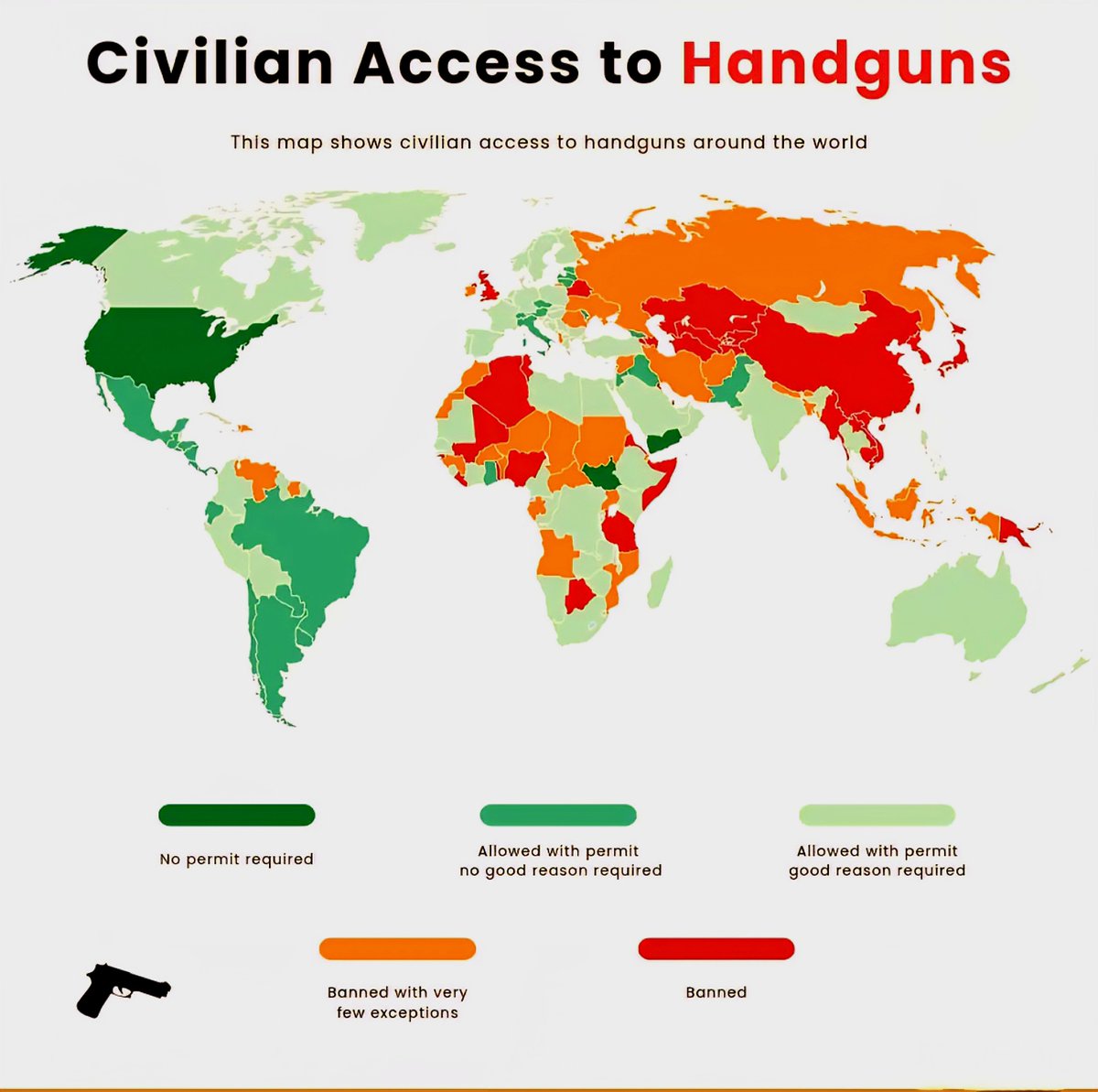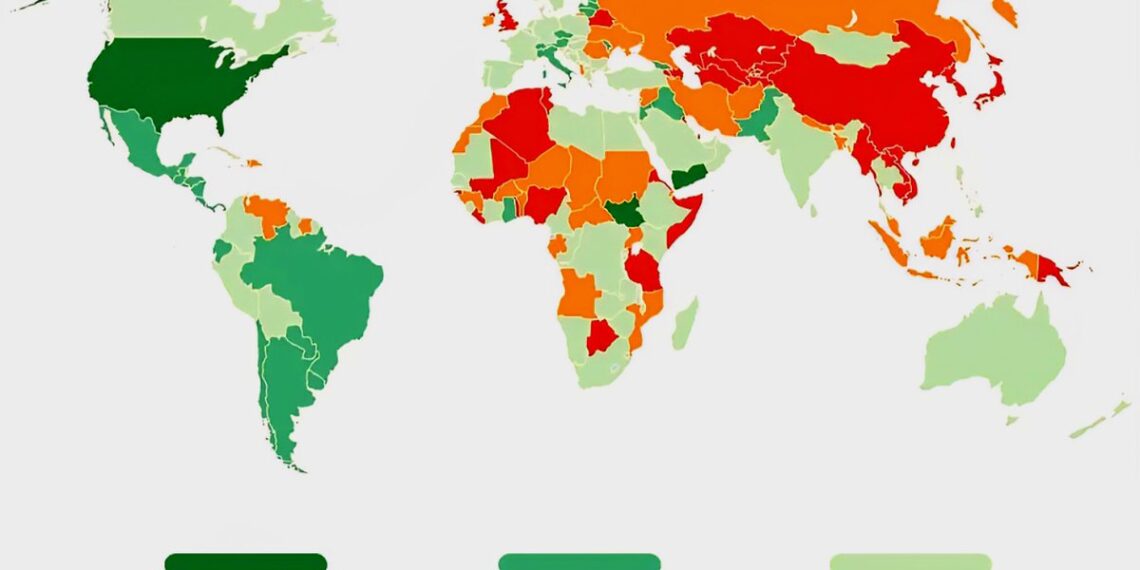Select Language:
Handguns Around the World: Access and Restrictions 🔫
1. The United States: Balancing Rights and Restrictions
The U.S. continues to lead the world in firearm accessibility, with nearly 50% of American adults owning or having easy access to guns. States vary significantly in their handgun laws—some states like Texas and Florida have relatively relaxed restrictions, allowing residents to carry concealed weapons with minimal permits. Conversely, states such as California and New York enforce stringent rules, requiring extensive background checks, license requirements, and restrictions on certain types of handguns.
Despite ongoing debates over gun violence, the Second Amendment remains a cornerstone of American gun policy. Recent legislation in 2025 has aimed at closing loopholes in background checks, while debates over magazine size limits and assault weapon bans persist. The accessibility of handguns has also fueled widespread firearm culture, with many Americans viewing gun ownership as a personal right and form of self-defense.
2. Europe’s Tightened Gun Control Measures
Across the Atlantic, European countries enforce some of the world’s strictest firearm laws. Nations like the UK, Germany, and France have implemented rigorous licensing procedures, mandatory training courses, and stringent background checks. Handgun ownership is often limited to firearm enthusiasts, security personnel, or individuals with special permits.
In 2025, the European Union imposed new regulations aimed at further restricting civilian handgun access. These measures include mandatory registration, stricter storage requirements, and annual renewal of firearm licenses. Public opinion remains largely supportive of restrictions, citing concerns about urban violence and terrorism. The result is a significant decline in handgun ownership, with most European countries reporting lower firearm-related crimes compared to the early 2000s.
3. Australia’s Landmark Gun Ban and Its Impact
Australia’s sweeping gun reforms following the Port Arthur massacre in 1996 set a global precedent. Since then, handguns have been heavily restricted, with only a small number of licensed individuals permitted to own them for sporting purposes or professional use. The 2025 landscape continues to reflect Australia’s strict stance, with regular audits, secure storage requirements, and the abolishment of most handgun licenses.
The country reports fewer firearm-related deaths than before the reforms, but debates over the effectiveness of such restrictions persist. Critics argue that illegal firearm markets still exist, and some believe that certain law-abiding citizens are unfairly disarmed. Nonetheless, Australia remains a model for firearm control policy worldwide.
4. Brazil: Struggling with Gun Violence and Limited Access
Brazil’s ongoing battle with gun violence creates a complex environment for handgun access. While residents can own handguns legally, the licensing process is rigorous, requiring background checks, psychological evaluations, and proof of need, such as self-defense in high-risk areas.
In 2025, there has been a heated debate about loosening some restrictions to combat violent crime, but many politicians and activists argue that more restrictions are necessary to prevent firearms from fueling crime. Illegal firearm trafficking remains a significant issue, with illegal handguns often used in urban violence. The government faces the challenge of balancing lawful access for responsible gun owners with tough measures to curb criminal use.
5. India’s Strict Controls and Cultural Attitudes
India’s approach to handgun regulation is among the strictest in the world. The country requires extensive licensing, with a focus on security personnel and select civilians under exceptional circumstances. The application process includes detailed background checks, security clearance, and justification for ownership.
In 2025, India continues to restrict handgun access, citing concerns over communal violence and terrorism. Despite the strict laws, illegal firearms circulate in some regions, posing challenges for law enforcement. Cultural attitudes emphasize safety and control, and firearm violence remains relatively low compared to other nations with higher gun availability.
6. Japan’s Low Gun Ownership and Zero-Tolerance Policy
Japan has one of the lowest rates of handgun ownership globally, thanks to rigorous firearm laws. Citizens seeking gun licenses must pass national background checks, mental health assessments, and participate in mandatory training sessions. Handguns are almost non-existent among civilians, with most firearms owned legally being hunting rifles or shotguns.
In 2025, Japan’s zero-tolerance approach continues to foster a safe environment. The country’s stringent enforcement and public support for gun control have contributed to consistently low rates of gun-related crimes. Only a handful of illegal firearms are recovered each year, emphasizing the effectiveness of Japan’s strict policies.
7. South Africa: Struggles with Illegal Arms and Limited Legal Access
South Africa faces a dual challenge: a high rate of illegal firearms circulating within urban centers and a relatively limited legal framework for handgun ownership. While legal gun ownership is permitted, lengthy licensing processes and strict criteria often discourage law-abiding citizens.
In 2025, efforts are underway to bolster legal access for responsible owners, including streamlined applications and community safety programs. However, the prevalence of illegal firearms fuels violence, making law enforcement focus heavily on cracking down on illegal markets rather than expanding lawful access. The country continues to grapple with balancing security needs and responsible firearm regulation.
8. Conclusion: A Global Snapshot of Handgun Regulations in 2025
The landscape of handgun access worldwide illustrates a vast spectrum—from the lenient, rights-based approach in the U.S. to the stringent, control-focused policies in Japan and Australia. Countries adapt their laws based on cultural attitudes, safety concerns, and historical contexts. The universal thread is the ongoing debate on how best to balance individual rights with collective security in an ever-evolving global environment.







